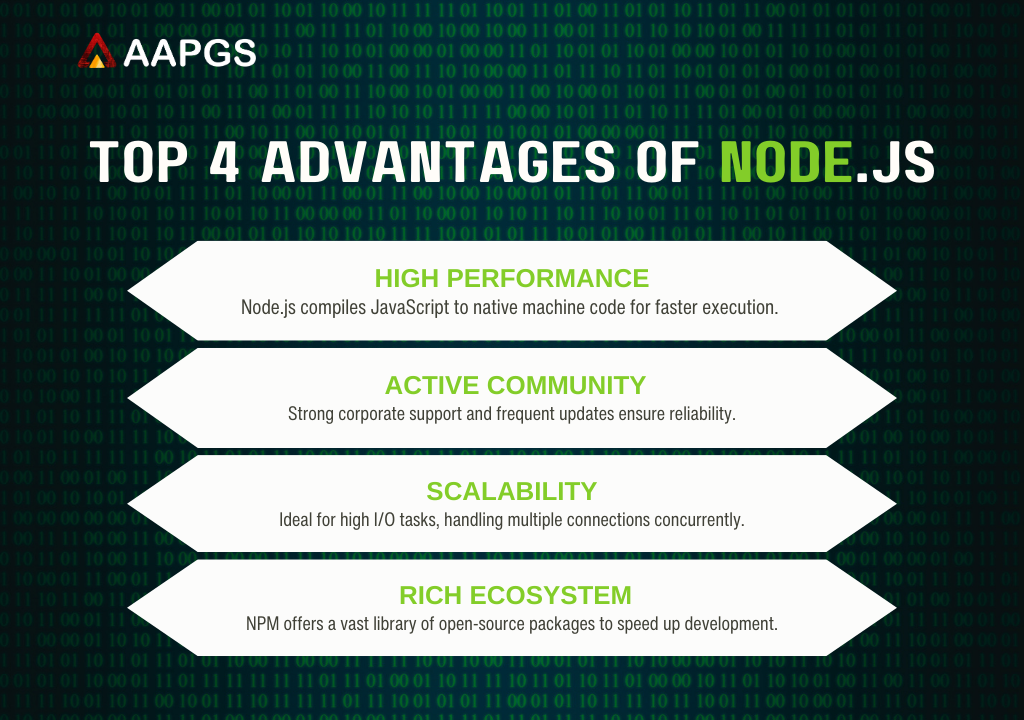In the ever-evolving web development landscape, the demand for real-time, interactive applications has skyrocketed. With businesses and users expecting instant responses and seamless interactions, the backend of these web applications plays a crucial role. One technology that stands out when it comes to developing real-time web applications: is Node.js. Its non-blocking, event-driven architecture makes it the perfect fit for modern needs, especially for applications requiring real-time data flow.
In this blog, we'll dive into why Node.js is the go-to technology for real-time web application and explore its advantages in backend development and how it can be integrated with both the frontend and backend processes.
1. Node.js: The Ideal Choice for Real-Time Web Applications
Node.js is an open-source, cross-platform JavaScript runtime environment that executes JavaScript code outside a web browser. It has become a popular choice for building real-time web applications due to its event-driven, non-blocking I/O model. This architecture enables the server to handle multiple connections simultaneously without being bogged down by long-running processes.

Key Advantages:
- Speed and EfficiencyNode.js is powered by the V8 JavaScript engine, making it highly efficient. Its ability to handle asynchronous requests with ease ensures that real-time web apps run smoothly, especially for applications like chat platforms, online gaming, and collaborative tools.
- ScalabilityA Node.js web app can be easily scaled both horizontally and vertically, allowing businesses to handle thousands of users at the same time without a hitch.
- Data StreamingUnlike traditional web app technologies, which treat HTTP requests and responses as isolated events, Node.js treats them as data streams. This feature is perfect for real-time applications, such as live streaming services.
2. Backend Development with Node.js
At the core of any real-time web application is its backend.Backend development with Node.js is particularly powerful due to its event-driven architecture, which facilitates on-blocking input/output operations. This makes Node.js ideal for creating scalable network applications that need to handle multiple users at once without lag.
Benefits in Backend Development:
- Real-Time Data Handling:The most significant advantage of the backend using Node.js is its real-time data processing capabilities. Whether it is for instant messaging, video conferencing, or live collaboration tools, Node.js handles multiple connections and data transfers simultaneously with impressive speed.
- Unified Codebase:Node.js allows developers to use JavaScript for both frontend and backend development, meaning a single team can work across the entire web app, reducing complexity and increasing productivity.
- Microservices ArchitectureWith Node.js, it's easier to build microservices-based applications that can be deployed independently. This architecture allows teams to develop and update services without impacting the entire system, enabling faster rollouts and minimal downtime.
Node.js in the Frontend: A Perfect Companion
Although Node.js is typically used in backend development, it also has a role in frontend development. Tools like Node Package Manager (NPM) simplify managing dependencies and building efficient front-end development workflows. For example, NPM can be used to manage build processes, minification, linting, and more.
Node.js for Frontend Developers
- Node.js Frontend Tools:Frontend developers can take advantage of Node.js to automate tasks like code compilation, CSS preprocessing, and static file bundling. By using tools like Webpack, Gulp, and Grunt, developers can optimize their front-end applications for faster load times.
- Isomorphic Apps:Node.js enables developers to write isomorphic applications where the same code can run on both the server and the client side. This significantly improves app performance and SEO since the app's pages are fully rendered on the server before they reach the browser.
4. Real-World Applications of Node.js
Node.js is at the heart of some of the most popular real-time web applications today. From messaging platforms to streaming services, it has proven to be a reliable technology for handling large-scale user interactions.
- Messaging Applications:Platforms like WhatsApp and Slack use Node.js to provide real-time messaging functionality to millions of users simultaneously.
- Online GamingNode.js is used by game developers to manage real-time updates, user interactions, and chat systems in multiplayer online games.
- Live Streaming ServicesServices like Netflix and Twitch leverage Node.js to stream data to users in real-time, ensuring smooth and lag-free experiences.
Conclusion
Node.js has revolutionized the way real-time web applications are developed. Its ability to handle asynchronous, non-blocking processes makes it perfect for applications that require constant, real-time interactions. Whether you're building a messaging app, a live streaming platform, or an online game,Node.js app development provides the scalability, speed, and flexibility needed for modern web applications.
By using Node.js for both frontend and backend development, businesses can streamline their development processes and provide users with fast, responsive web experiences. As the demand for real-time applications continues to grow, Node.js will remain a leading technology in web development.
.png)